 Your new post is loading...
 Your new post is loading...
...Conducted by OnePoll on behalf of I Love Velvet, the study found that 51 percent of Americans believe the cash register’s days are numbered, even saying that it would be “gone soon.”
“Instead,” the company says of its findings, “consumers favored solutions like MPOS which allow for a customer to check-out anywhere on the store floor. Thirty-five percent of respondents stated that they would shop at the store more often.”In addition, 17 percent of those surveyed would share their experience on social media, while 37 percent would tell a friend and recommend the retailer....
You can choose to be part of the online conversation and contribute to steering it. Or, you can let conversation go on without you, letting others control what is said about your business brand....
So you start your business, you get a website, and sign up for Facebook and maybe one or two other social networks. Your online marketing plans are set, right? No! One thing you forgot is social listening tools…There are now many options – Both free and paid.This is meant as a social listening tools review. Those that will benefit the most are just beginning to calculate winning customers online by connecting the puzzle pieces of their efforts...
As social media continues to mature, established industry players from large platforms to emerging vendors are quickly moving to standardize the value their business.In April, Facebook introduced Cost-Per-Action, or CPA, a new metric that allows managers at brands and agencies to assign a dollar value to specific actions.Instead of paying by impressions (CPM) or clicks (CPC) -- metrics that cast a wide net and can be easily gamed -- actions help managers understand the true cost of acquiring fans or engagements. A
nd with marketing budgets allocating more resources to social media campaigns, demonstrating value for money has become a priority when generating earned media through a mix of owned and paid promotion. Early this year SocialChorus, an advocate marketing company, published an Ebook that compiled all of the available research on the monetary value of social endorsements. While conceding that no standard formula can be considered definitive, The Earned Media Value Index (EMV Index) is a starting point toward navigating the new cost metrics that are driving managers day-to day and month-to-month campaign decisions....
Super-rich watch buyers are not all equal. Recognizing that ultra-high-net-worth consumers are not a homogenous group based on psychographics, there are three profiles marketers can use to craft appropriate messages for the watches they are selling.
“If you assume the market of ultra-high-net-worth households is at about 200,000 worldwide,” said Douglas Gollan, Editor-in-Chief of Elite Traveler, a magazine that targets the wealthy through distribution aboard private jets and also publishes an annual watch guide for readers, “using the research we’ve done examining psychographic composition of wealthy watch buyers, there are 21,000 Connoisseur households accounting for US$4.7 billion in sales, 31,000 Trendsetter households generating US$2.5 billion in purchases and 13,000 Winner households accounting for US$2.3 billion in luxury timepiece sales.”...
Six minutes: it isn’t a lot of time, but it’s all you’ve got to keep shoppers’ attention, according to a new study conducted in the UK from Omnico, an omnichannel and customer experience company.
According to the findings, British shoppers will patiently wait in line for roughly 5 minutes and 54 seconds in-stores before they abandon their path to purchase completely and leave the store....
“Brandwashed: Tricks Companies Use to Manipulate Our Minds and Persuade Us to Buy” is an attempt to write a modern version of “The Hidden Persuaders”. Martin Lindstrom cannot write as elegantly as Packard, as his chapter titles (eg, “Buy it, get laid”) make clear. But as a marketing veteran who lists McDonald's, Procter & Gamble and Microsoft among his former clients, he knows the industry well. It is far more sophisticated than it was in the 1950s, and just as cynical.
Marketers have vastly more information about potential consumers than ever before. Every time you use a loyalty card you surrender personal information. Every time you do a Google search or hit the “like” button on Facebook, you surrender yet more. Google and Facebook protect personal privacy, but they also make money by selling generic information to advertisers. Professional data-miners use electronic data to create a detailed picture of what you have bought in the past (“history sniffing”) and how you bought it (“behaviour sniffing”). They can then draw your attention to products they think you might want to buy in the future. Smartphones can tell you that there is a shop nearby that stocks just the thing you have been looking for.
Marketers milk science for insights. Studies show that music can affect people's behaviour: shoppers in American department stores who are exposed to piped tunes with a slow tempo spend 18% longer in the store and make 17% more purchases than those who shop in silence. Marketers routinely track shoppers as they make their way around supermarkets and listen in on their conversations at the counter. They also take willing subjects and observe their reactions as they gawp at products....
...When it comes to data, you can drink it, but you’re not quite sure it’s going to do you any good. According to a survey by Alteryx and AbsolutData of industry leaders last spring, the impediments to leveraging customer analytics involve the persistence of corporate silos, a general lack of expertise within the company, and the burden of simply managing the sea of data.
The most common challenge cited by these respondents (43%) was accessing data managed by other departments. These departments use multiple data sources, and executives complain that the data is often overlapping when each department pursues similar questions. Right behind the silo problem, however, is simply integrating the enormous amount of data that is already there, cited by 39% of respondents. At about the same level (38%) is the similar problem of integrating the disparate data types....
Do the Promoted Tweets and Sponsored Facebook Posts we see online really influence what we purchase when we sign off and head to the store? Datalogix, the data giant that tracks more than $1 trillion in consumer spending, is finding the answers for Twitter and Facebook.
Through a new advertising metric Twitter is calling "offline sales impact," it has been working with Datalogix to find out how brands' tweets--essentially miniature online ads--impact their offline sales.In preliminary studies with 35 brands, Datalogix found Twitter users who were exposed to a brand's tweets purchased more than users who didn't interact with a brand's tweets at all, regardless of whether they were Promoted Tweets or organic. Datalogix also found users who both followed a brand's Twitter account and were exposed to that brand's Promoted Tweets made nearly 30% more offline purchases.
M-commerce is prized for its convenience, but consumers want more from their mobile shopping experience....
If you've ever made a purchase on your smartphone or tablet, you're part of a rapidly growing trend called mobile commerce. The convenience of mobile commerce (m-commerce) has made it a popular choice among consumers over the past several years, and it has quickly become a large part of today's shopping landscape. Despite this popularity, a new study finds that consumers' expectations for their mobile shopping experience aren't being met.
Qualitative research firm iModerate and market research firm uSamp reported the findings of their most recent study on consumer motivations, preferences and barriers regarding their engagement with m-commerce. Their research found that the most prevalent consumer concerns about mobile shopping are personal data security and functionality. According to the study, respondents want marketers to focus on a better customer experience, transparency about security issues and content prioritization.....
...A survey conducted by Toluna and Adroit Digital revealed that consumers are influenced by social media recommendations. In total, 40 percent admitted their decisions are swayed by the reports they read on social sites, with 7 percent saying they are highly influential.
Shared social content might spark prospects’ interest, but it’s only the first step. Marketers must assume internet users are going to research products and services before converting. The survey confirms this idea, showing that around one-third of consumers buy after visiting one website, but 22 percent go to two domains and 17 percent navigate to a third before making up their minds. Content marketing gives companies a way to ensure effective messages are present at every stop along the way....
Content is the fuel of social interaction on the Web: Nearly one-quarter (23%) of all social media messages and one-half (47%) of industry-specific social messages contain links to content, according to a new study by AOL and Nielsen. The amount of content shared via social media varies by channel: - 42% of all Twitter posts contain content-sharing links; 73% of Twitter posts related to a specific industry (auto, tech, finance, and entertainment) contain sharing links. - 41% of all blog posts contain content-sharing links; 64% of industry-specific blog posts contain such links. - 12% of all Facebook posts contain content content-sharing links; 22% of industry-specific Facebook posts contain such links....
...Smartphones allow us to answer our own product questions about options, specs and, of course, price while we’re out shopping. And Google is trying to figure out what that means for marketing and purchase decisions. Seventy-nine percent of smartphone owners are what Google calls “smartphone shoppers,” meaning that they use their smartphones at least once a month in stores. That’s a lot of people. If there are 130 million smartphone users in the U.S., then about 111 million Americans use their smartphones to prepare for shopping or to look things up while there. It’s not surprising that Google wants to get in all those heads and see what’s going on. There’s money there!... The most surprising finding was probably that people who consistently use their smartphones as part of their shopping spend 25% more than people who only use their smartphones for shopping occasionally....
From obsessing about real-time data to buying advertising based on ad impressions/page views to celebrating Likes, learn how to avoid eight common mistakes.... I'll expand my purview a little bit in this post, from just looking at silly metrics to also looking at silly data "things." My hope is to use these eight examples to illustrate to you how, if you are spending 30% of your time with data, you can use crazy cool data strategies/metrics to ensure many, many promotions. Eight data things that marketing people believe that get them fired…. 1. Real-time data is life changing. 2. All you need to do is fix the bounce rate. 3. Number of Likes represents social awesomeness. 4. # 1 Search Results Ranking = SEO Success. 5. REDUCE MY CPC! REDUCE MY CPC NOW!! 6. Page views. Give me more page views, more and more and more! 7. Impressions. Go, get me some impressions stat! 8. Intent beats demographics and psychographics. Always....
|
Want more information about your customers, prospects and competition? Use Facebook for market research and get insights that make your marketing better.
Perhaps one of the most underutilized benefits of Facebook is market research.
Because of its size (1.1 billion and counting), Facebook can give you insights about your customers, prospects and even your competitors.Here are eight ways to use Facebook for market research...
Measurement in the public relations industry has been a problem. Could publishers and PR work together to solve it?...
In part, digital has solved the problem having opened up new (and more measurable) avenues for messaging and content but media relations – the core PR function – still remains highly intangible.The paid media industry meanwhile has access to untold amounts of data covering audience profiles, interaction and engagement.Why can’t these insights be extended to editorial media?...
The desire to be part of something bigger. To really understand what it is about branding that appeals to people, we first have to understand the deeply entrenched set rules that we as people, animals, or however you would like to refer to yourself, actually work to, whilst observing the guidelines, parameters and systems that we work within…sure Brands act as a sign post for the product or service, building associations etc but that’s not all and not enough either.
To avoid going into the deep physiological motivations that affect all of us, for the purposes of this article I am forced to make some sweeping generalisations. The first of these is that beyond all other emotional requirements, we have an unending drive to be understood. Understanding is the lifeblood of our emotional state. For those of you that wish to do a little back reading about this somewhat broad statement, I can suggest several well written studies, that do a far better job of explaining why this is than I can deliver in this short thought piece.
To illustrate: have you ever noticed that most people actually quite like talking about their thoughts, feelings, opinions and emotions to other people. We see the evidence of this in the massive popularity of status updates and tweets etc…
Today's consumers are using many channels to consume information. Are retailers thinking about an omnichannel strategy? If not, they should!
It’s well established that today’s consumers use multiple channels – mobile, Web, social media, in-store – when engaging with retailers. On any given day, a shopper might research a clothing item online, visit the brand’s Facebook page and then purchase it in a store where she can try it on; the next, she might see something in a store on her lunch hour, price-check it on her smartphone and purchase it online at home, after checking in with the retailer’s social media pages.
According to the Interactive Advertising Bureau, three-quarters of shoppers use their smartphones while in-store to make a purchase decision, and according to Vantiv VNTV 0%, Inc., half have research and purchased an item online and then picked it up in the store. But how aware are consumers of all this channel-switching? Do they think, “Wow, I’ve really used a lot of channels today!” Or even, “Hmmmmm – which channels should I use to engage with my favorite retailer?”
I’m thinking probably not. They’re just doing what consumers do, flitting from channel to channel like a butterfly, as fickle as can be, calling to mind the flighty “followers of fashion” described in The Kinks’ 1966 single. What is an Omnichannel Strategy? With consumers freely using whichever channel suits them at the moment, retailers must attract, engage with and gain the loyalty of these followers of fashion, and they can do this by creating a consistent experience among all channels — the so-called omnichannel experience.
An omnichannel strategy begins with generating awareness on digital channels, because while brand awareness in the past was all about signage and window dressing on High Street, it’s perhaps more important today to stand out on digital channels. Indeed, in emerging markets, mobile devices are the first channel through which consumers may experience your brand....
By identifying the differences between “innovators” and “laggards” and everything in between, Geoffrey Moore creates a roadmap for how new markets develop. While his book focuses on high tech, the lessons that he draws and the example he gives are applicable to every industry and business situation....
Why are techies and scientists so excited about big data? It allows us to identify patterns and predict things like never before.
A recent study from Exact Target reveals some surprising stats on what consumers expect from B2B and B2C brands on Twitter.
A mere 13% of Canadians consider themselves Twitter followers, according to a new study released by Exact Target called “Subscribers, Fans and Followers: The Digital North.” The study defines a “follower” as a person with a Twitter account who follows at least one company or brand.
Conducted in March 2013, the study explored how Canadians behave online with a focus on email, Facebook and Twitter. It reveals a number of interesting findings including: When and how Canadians use email, Facebook and Twitter. How consumers are motivated in the three channels. What Canadian marketers should do to communicate more effectively...
As of May 2013, almost three quarters (72%) of online U.S. adults use social networking sites, up from 67% in late 2012. When we first started asking about social networking sites in February 2005, just 8% of online adults said they used social networking sites.In addition to asking about general usage of social networking sites in our current survey, we included a stand-alone question about Twitter and found that 18% of online adults are now Twitter users. This is roughly double the 8% of online adults who used Twitter in November 2010, the first time we asked about Twitter as a stand-alone platform.
Today, social networking site use is a major activity for internet users from a wide range of demographic groups. Younger adults are especially avid adopters, but social networking continues to grow in popularity for older adults as well. Six out of ten internet users ages 50-64 are social networking site users, as are 43% of those ages 65 and older....
Here are some of the most interesting digital marketing stats we've seen this week.Stats include a decline in PC sales, Q2 paid search data, Facebook mobile stats, mobile traffic, PPC budgets and ecommerce in Australia.
Study finds Brits are shunning books in favour of using gadgets while on the toilet. Almost half of us regularly use phones, tablets and eReaders on the loo with a quarter of us spending this time shopping online.Brits are shunning books, magazines and newspapers in favour of using their gadgets while on the toilet. A study has found that 41 per cent of Britons admit to regularly using their phones, tablets and eReaders when sat on the loo. And 26 per cent spend this time shopping online....
Having a social media presence can be an invaluable resource for providing insights into consumer needs, sentiment, and opinions towards a business, service or brand. Social media is by no means a replacement for traditional market research, but it can be used in a broader sense. That broader sense is becoming a widely adopted trend referred to as Crowdsourcing.
Crowdsourcing is the act of outsourcing tasks to an undefined, large group of people or community (a "crowd"), through an open call. Twitter is the perfect platform for implementing such a tactic and will often yield insightful, and sometimes surprising, results. Using Twitter to openly ask your followers and the community as a whole has additional benefits. By listening, organizations gain first-hand insight on their customers' desires.You have the option to follow up with your respondents in real time. Plus, because participants are not being led by moderators or necessarily thinking about the expectations for responses, the answers they give can be more genuine and revealing....
...Among other things, baby-boomer marketers need to accept the fact that millennials have not inherited their parents' love for the "touch" of paper. They do not naturally go gaga over double-page spreads of either editorial or advertising in magazines. They do not feel compelled to seek their fashion and beauty direction from the magazines that served as bibles for older generations. Nor do millennials feel the need to park themselves in front of a TV at the time appointed for their favorite show, or even to watch TV on a TV at all. Millennials spend a huge amount of their lives online: on smartphones (59%), on tablets (35%) and on their laptops (70%). As of 2011, 91% of millennials are regular internet users, according to Forrester Research....
|



 Your new post is loading...
Your new post is loading...



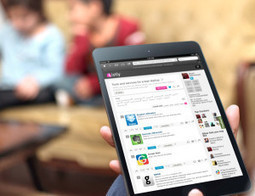



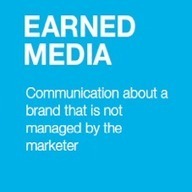









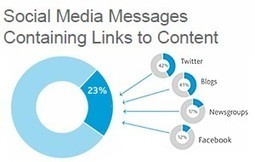
















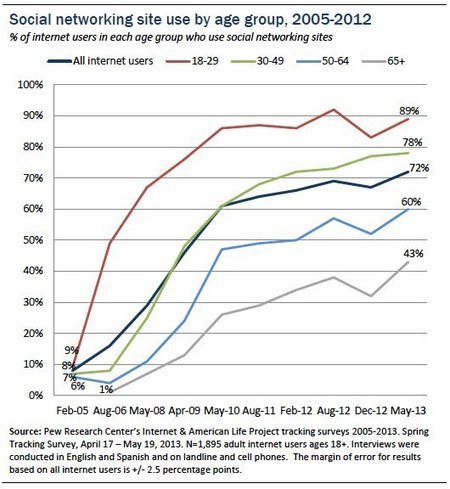

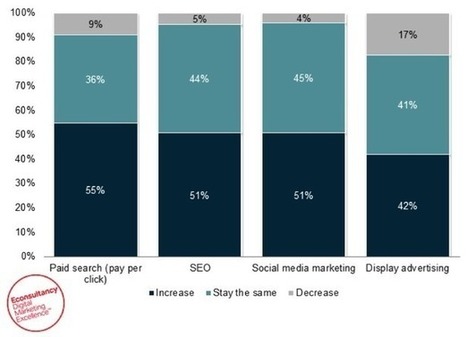



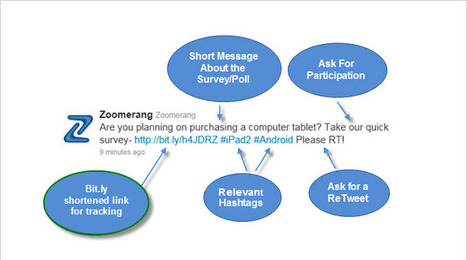







Retail disruption ahead from mobile point-of-sale devices? The market is ready for new mobile tools but financial institutions and business are lagging in implementation compared with Europe and Asia.